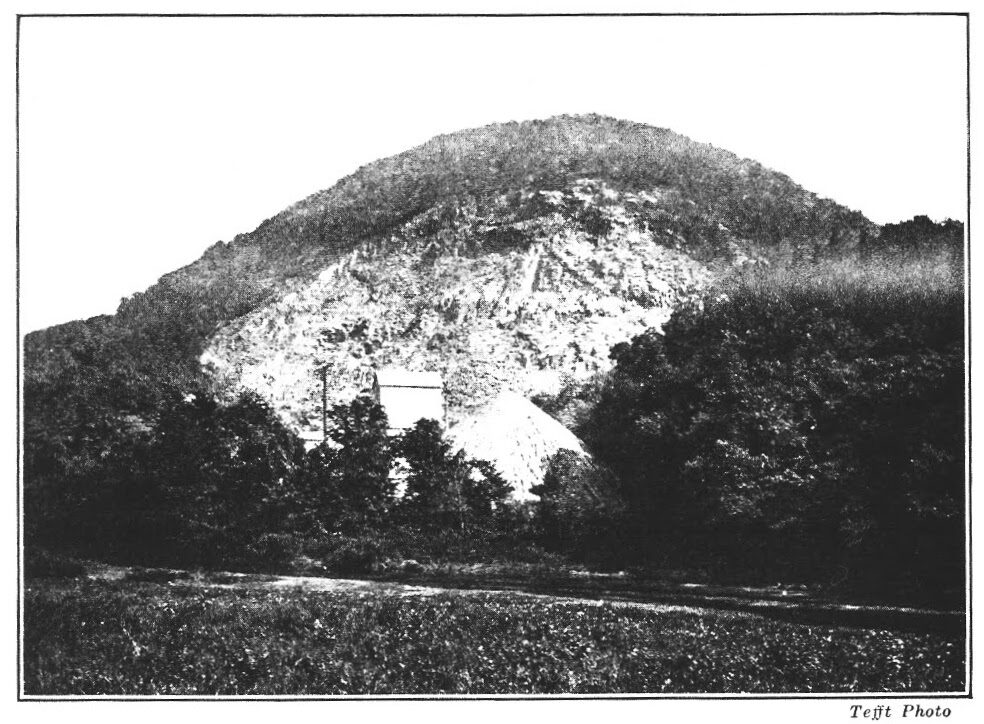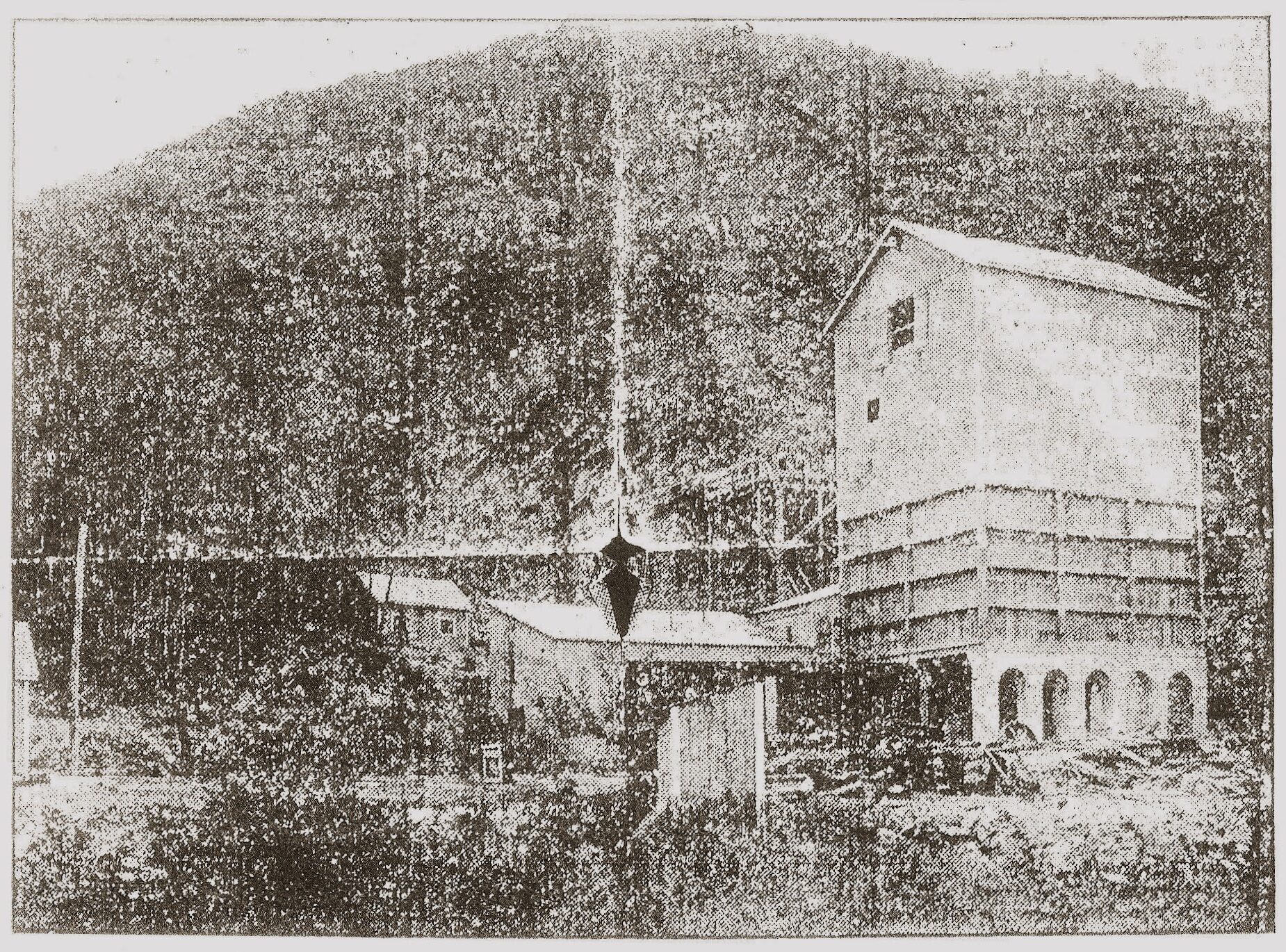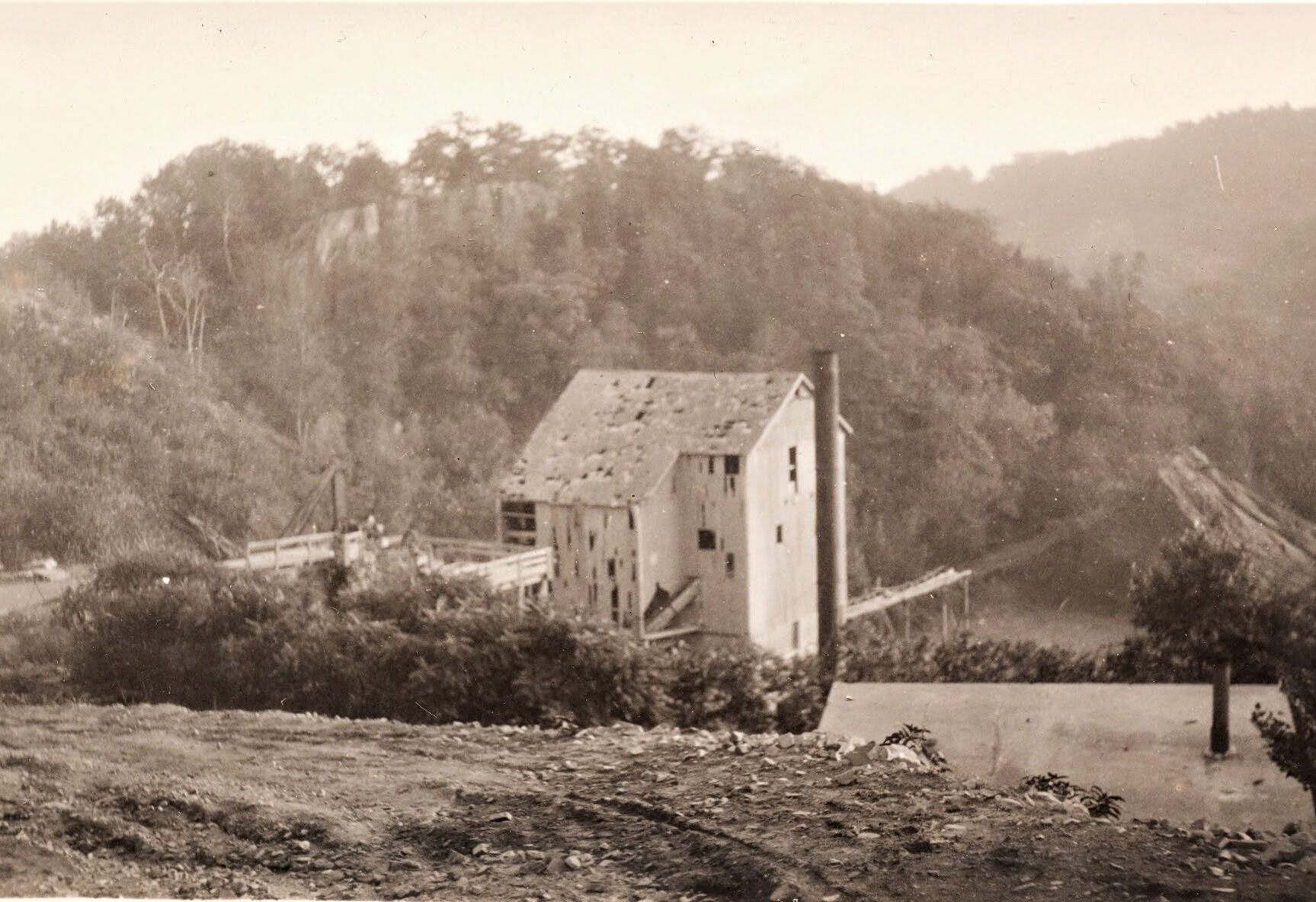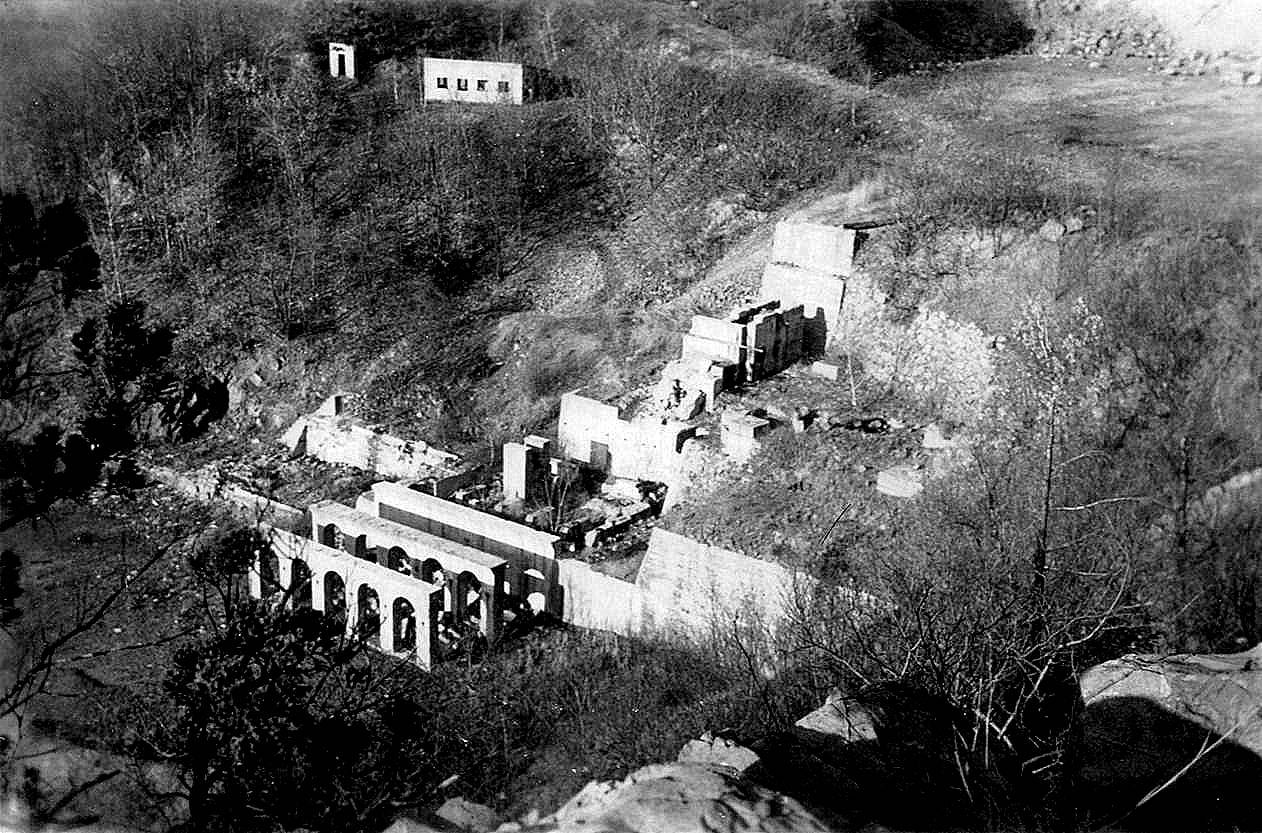Quarrying the Giant
Stone by Stone
The story of quarrying at the Giant begins with Willis Miller Cook (bio HERE and HERE) who owned the land that made up the Giant’s head. Cook had built a cottage on the Giant’s rugged chin, and grew frustrated by constant vandalism to his cabin. On July 27, 1911, he signed a 20-year quarrying lease with the Mount Carmel Traprock Company.
Quarrying began in earnest in 1912, and grew into an enormous operation. Stone was blasted from the Giant’s head using dynamite, and brought to a stone crusher where it was broken up into smaller pieces. From there, it was piled in an enormous gravel pile, before being loaded via a tipple into train cars. The cars would then travel over a bridge installed across the Mill River before making their way onto the New Haven and Northampton Railroad lines.
Images taken while the quarry was active (right) show the enormity of the operation, and its impact on the Sleeping Giant.
Today, some of the quarrying infrastructure remains. The arched foundations of the crusher are still largely intact, and are home to an interpretive panel that tells the story of quarrying at the Giant. Both can be accessed via the Violet trail, on the western side of the park. The machine shop is also in this area, and located just a stones throw from the explosives storage building along the Red Diamond trail (near its intersection with Violet). Other artifacts remain, and can be spotted with a keen eye.
A friendly reminder – the quarry ruins are historically significant pieces of the park’s history. It is a felony to deface or destroy any of these remains.
The Value of Traprock
At the time the quarrying lease was signed, Traprock gravel was highly sought after for both its durability and strength. The expansion of railroads and the advent of the automobile era in the early 20th century created a massive demand for sturdy and reliable materials for road and railway track bed construction. Traprock, crushed into gravel, was ideal for this purpose due to its hardness and ability to provide a stable, wear-resistant surface.
Cook, knew the value of the traprock under his land, and included a clause in the lease that he be paid two cents for every cubic yard taken from the land. Once the quarry was up and running, this arrangement equated to an annual payment of roughly $2,500 (equal to approximately $75,000 per year in today’s dollars).
While the quarry was active (1912-1930), a total of 1,053,571.23 cubic yards of rock were taken from the Giant’s head.
Conservation Efforts
The blasting at the quarry was nearly non-stop, and soon neighbors grew weary of the constant noise (and occasional flying debris). Efforts began to stop the quarrying, and to convert the Sleeping Giant into a park for all to enjoy. The Sleeping Giant Park Association was central to these efforts, and the story is continued on the “SGPA History” page.




